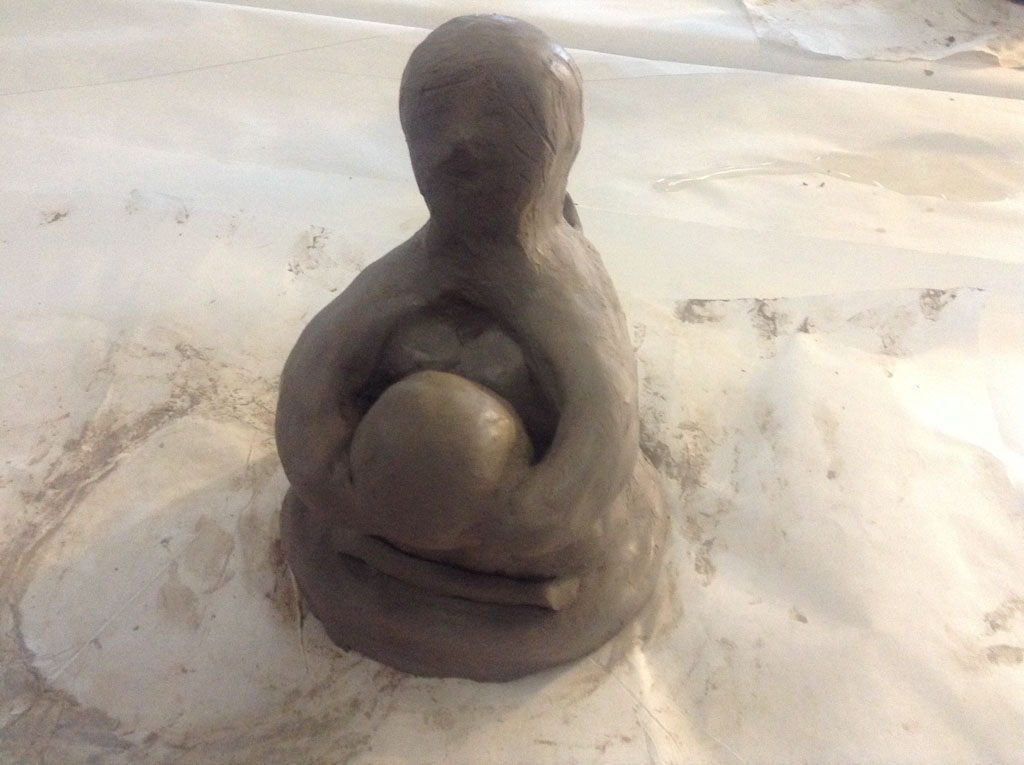What to do with Art

The joy of creating something, may at times come in conflict with the burdening question “what to do with Art?”. Storing, selling or even giving away an art product can involve energy, time and effort that you may not have had in mind when the joy of creativity dawned upon you.
The thought of “what am I going to do with this artwork?” may also hang above you like a heavy cloud in the process of creating, and it may even interfere in the spontaneous way one creates; influencing and disturbing the natural flow.
So, what to do with a finished piece of art?
If the artwork is done more for the purpose of art therapy, in hope to heal, to resolve, to confront or even mealy to process personal issues, it may hold within it deep negative feelings, traumas or pain. It may even simply be filled with past memories that belong in the past and have no place in the present. These kind of artwork should not linger around us and in our living space, they served their role in and through the process of being created and then they need to be parted from and let go of.
Letting go
It is important to learn to ‘let go’, no less than it is important to learn to create. For these are the two sides of the same coin or process – creating and destroying, creating and departing, creating and letting go of.
 Just as a parent gives birth to a child, then nurtures and supports the child until they are an individual person that is no more relying on them, and the they must let the child go, for that is the only way for the child to become a healthy adult and for the parent to move on to the next stage in their life.
Just as a parent gives birth to a child, then nurtures and supports the child until they are an individual person that is no more relying on them, and the they must let the child go, for that is the only way for the child to become a healthy adult and for the parent to move on to the next stage in their life.
Letting go of anything and in this case – of an artwork, may be a challenge, but, it is a challenge that is important to address acknowledge and master. If we can’t let go, we cannot create more, and we can get stuck or we find ourselves in a situation where we don’t have any more space, both inner and external space, for new art work. For instance, if one paints – surely it is not time to stop painting once they have all the walls in their house decorated.
The important of surround ourselves with uplifting visuals, images, colors and concepts is one that should not be underestimated. Even if an artwork is meaningful and deeply dear to us, it does not mean it need to be in our space, particularly if it has anything but positive, supportive and inspiring effect on us.

If we find that a piece of art should not be in our home or surrounding, and do not wish to throw away the artwork we may need to find it a home, a place where it can be and we can move on.
While we primarily must take care of ourselves, we also need to consider that we don’t want to leave a created work that is filled with negativity, sadness or pain somewhere else for other to be effected by. It can be a hard moment – accepting that a loved created work, that we may even find beautiful, needs to be fully discarded for it is filled with negative emotions and had completed its purpose by its very creation.
Leaving nothing behind
One of the unique things about art forms such as music is that one can create and play for hours, practicing different musical compositions, and even after a full day of practice there is absolutely nothing left behind. Nothing remains, nothing to  “show”, nothing to hold on to or need to find what to do with it. It is all created in the moment and dissolved in the moment.
“show”, nothing to hold on to or need to find what to do with it. It is all created in the moment and dissolved in the moment.
One can of course record music and then make it “stay” but in its core essence, it is always temporary, it comes into creation and disappears instantaneously, effortlessly.
The same can be said about dancing and acting, there too, art is always made in the moment – the moment of creating and the moment of exhibiting the artwork are one. It is a single process and once the creative process is finished, so is the living art.
This can be seen as a light and fresh quality that allows the creator to stay unattended to the artwork, to keep creating from the ever open space, for an ever new relationship with the artwork.
The influence
Unlike these forms of art, when we come to plastic art the challenge the artist faces and the question of “what to do with the artwork” somehow always remains and has the ability to creep and tint the creative process
How will it look? Where will I put it? What will others think or say about it? Will the materials that I use last or fade?…these and similar questions can interfere and influence the creative process and even take over the control in the process, pushing aside the experimental openness that art longs for.
Creating without judgment in general and when we come to create Meditative Art, even more so, is an important quality for an artist to master, for that is the only way art can surprise us, inspire us and allow the new to come into the now.
Impermanence
If we free ourselves from the burdening dilemma – “What to do with our art?” we are free to create and explore.
In many traditional arts, the created work would always be seen as temporary by its very essence for the materials used were such that would not last long. Many traditional Meditative Artwork see the process of destroying the created work after it is made as an integral part of the process for it plays an important role in the practice of remaining detached and accepting impermanence. (as can be seen in the image, Tibetan Sand Mandala)
Knowing that the artwork is only created for the moment and that that is its place and not more, undoubtedly changes the way one create and even, the artist themselves.









